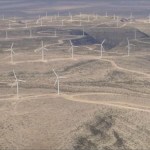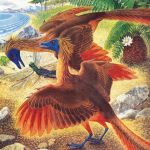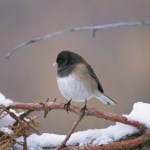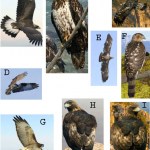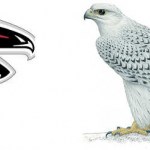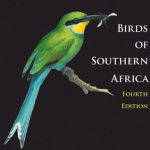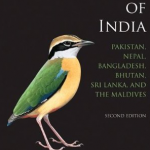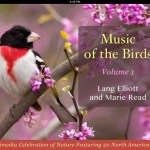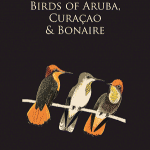birds
I've been collecting information on this topic for a while, and yesterday, I sat down to write a post that would clarify the question of the impacts of windmills on bird populations. It turns out, however, that I was totally unsatisfied with the available data on everything from windmills to building strikes to cats, so instead I wrote a post making that very point: We really have no idea. This is an interesting and important problem, though, so it is worth having a conversation about.
The post is here: "How many birds are killed by windmills and other green energy projects?"
There are over 10,000 species of bird on the Earth today. There is one blog called "10,000 Birds" for which I write a monthly article, in case you did not know. But this post is about Ten Thousand Birds: Ornithology Since Darwin, a book by Tim Birkhead, Jo Wimpenny and Bob Monegomerie.
Birds and various studies of birds are central to evolutionary theory and the development of all of the surrounding biology and science. Here's a short list of key roles birds have played in evolutionary biology:
Darwin's study of pigeon breeding was central to On the Origin of Species and later works.
The…
The cause of "angel wing", a deformity found in waterfowl such as ducks, geese and swans has been uncovered. Sadly, it is often caused by well-intended people feeding birds foods that are too high in proteins or carbohydrates (bread, crackers and popcorn anyone?). Not surprisingly, this condition mainly impacts birds that live in public areas. Because the deformed birds are unable to fly, thousands succumb every year to predators or inclement weather.
Conservationists suggest instead feeding the birds waterfowl feed, duck pellets, sliced seedless grapes, shredded swiss chard and romaine…
The ranger stood on the dirt road, facing south, and the rest of us, scattered about the parked safari truck, facing north and paying close attention to what she was saying. The sun was slipping quickly below the red sand dunes to our west, and the day’s warm breeze was rapidly changing to a chill wind. She talked about what we might see after we remounted the safari truck, which we had just driven out of the campground at the southern end of Kgalgadi Transfrontier Park, where we were staying in the South African camp, just across from the Botswana camp. This would be a night drive, cold,…
Every one of these is a topic I'd like to write an entire blog post about but I don't have time right now. So, YOU write the blog post!
In Michigan there is an emerging debate and discussion about using the Vast Forests in that state to provide energy. This is a good idea because it does not involve the release of fossil Carbon from fossil fuels. It is a bad idea because it involves the release of Carbon currently trapped in a medium term and important Carbon sink. It is interesting because it highlights a key feature of the whole energy and climate change thing. Sun makes burnable stuff…
How do birds survive the cold weather, especially during really cold winters like the one we are having now in much of the United States?
One part of this answer has to be, sadly perhaps, that the sometimes don't. But I'll get to that later.
You need to know two things as context. First, there are a lot of different kinds of birds, and the adaptations I'll mention below are not found in all of them, and probably all of these adaptations are not found in very many species. Second, many birds are actually at great risk during cold periods because birds generally live on the edge when it…
The vast majority of the 10,000+ living species of birds are passerines, and the vast majority of those have a similar system of breeding: Mom and dad bird make a nest and share parental responsibilities roughly equally, if not identically. There are variations on that theme, of course. Even the non-passerines often follow this pattern. So, when we find a pattern that is different it is reasonable to try to explain this in adaptive terms; what features of this variant pattern provide enhanced fitness, and what ecological or social factors underly it?
There are two patterns that are fairly…
First, we had giant catfish eating pigeons (remember this?). Now, we have scientifically confirmed reports of tiger fish eating swallows on the wing. The pigeons were just standing around on the beach, but these swallows are fast moving birds in flight being snatched out of the air as they forage over the lake's surface. Please visit my latest post on 10,000 Birds, where I write a monthly thing: Swallows, Swallowed.
_______________
Photo Credit: brian.gratwicke via Compfight cc
I came across this video showing thousands of migratory birds circling the Tribute in Lights yesterday. The birds were migrating along the Atlantic Flyway and were disoriented by the lights. Other birds may have been attracted to the large number of insects and smaller birds caught up in the lights as prey (Cornell Lab of Ornithology). To reportedly help re-orient the birds and prevent exhaustion, volunteers from the NYC Audubon turned off the spotlights temporarily.
Video taken by: Shervin Pishevar
The lights are xenon searchlights in lower Manhattan arranged by artist Gustavo Bonevardi to…
You’ve heard of the The Crossley ID Guide: Eastern Birds (The Crossley ID Guides). It is a revolutionary new way to assemble a field guide, where each page has a drawing of what it would look like if suddenly outside your living room there was a full blown habitat for some species of bird, with individuals from that species flying or sitting all over the place in different positions, doing different things, and at different distances. These pages in the field guide almost give you the experience of having seen many of this partiuclar species of bird, like you were suddenly an experienced…
The Crossley ID Guide: Raptors is just now coming out. I was able to spend a little time with it a few weeks ago, though my official copy has not arrived yet. But Princeton (the publisher) is organizing a major blog hoopla over the publication of this new book, and I've signed on to participate. Starting yesterday a number of bird-related blogs are producing posts related to this book. My post comes out next Tuesday and it will consist of a quiz, a bird quiz. Anyone who gets the quiz right will be eligible for random selection, and whoever gets randomly selected will be hooked up with…
I just put up a post in 10,000 Birds reporting on a recent study of duck stamp sales and duck hunting. There have been changes in recent years in the patterns of both waterfowl hunting and the purchase and use of federal duck stamps. Waterfowl hunters are required to have a duck stamp, and about 90% of the funds raised through the sale of these artistic quasi-philatic devices are used to secure wildlife preservation areas. For decades, duck population numbers and duck stamp sales were closely correlated, but recently this correlation has broken down. Read the post to find out the details and…
There will be no Falcons in the Super Bowl, only Ravens, this year. But, there has been a lot of talk about Falcons lately so I jotted down a few notes and thought I'd share them with you.
One year after moving to Minnesota, I relocated to the city of Falcon Heights. If you know the Twin Cities you may be familiar with the “Saint Paul Campus” of the University of Minnesota. This campus is located almost entirely within Falcon Heights, not Saint Paul, and I think this is a missed opportunity. How cool would it be to take classes in ornithology, or visit the Raptor Center, in Falcon Heights…
Last night Julia sent me a link to a video of a Golden Eagle swooping down into a Montreal park, picking up an infant/toddler and lifting it several feet into the air before dropping it and flying off. Since then many on the Intertubes have declared the video to be a fake while others insist it could be real, but unfortunately many of the reasons given for it being a fake or for being real are misconceptions or inaccuracies. I'm sure the event depicted in the video is faked ... no eagle picked up a child as depicted ... but the reasons for it being a fake are not as many have…
When traveling and working in South Africa, I've always used Newman's guide to the birds of Southern Africa, and more recently, I found the Sasol guide to be helpful as well. (I discuss both briefly here.) Now, I've got on my desk a copy of Princeton's Birds of Southern Africa: Fourth Edition by Ian Sinclair, Phil Hockey, Warwick Tarboton and Peter Ryan. You will know Sinclair from his South of the Saraha bird guide.
All three books cover about the same species, as far as I can tell (just under 1,000) and have a similar range of illustration and information. They all have overview…
Let's look at Birds of India: Pakistan, Nepal, Bangladesh, Bhutan, Sri Lanka, and the Maldives (Second Edition) (Princeton Field Guides):
The best field guide to the birds of the Indian subcontinent is now even better. Thoroughly revised, with 73 new plates and many others updated or repainted, the second edition of Birds of India now features all maps and text opposite the plates for quicker and easier reference. Newly identified species have been added, the text has been extensively revised, and all the maps are new. Comprehensive and definitive, this is the indispensable guide for anyone…
Magnetite in a fish nasal cell. Image: The Scientist from Herve Cadiou, University of Cambridge
In a prior blog, we talked about different animals that are able to sense the Earth's magnetic field. The mystery of how fish, and perhaps other animals, do this may be solved. Animals use the magnetic field like a compass. This is an important skill especially to migratory species who don't have the benefit of Google Maps. It is sort of a built-in GPS system.
Dr. Michael Walker from the University of Auckland discovered that brain cells connected to the nasal cavity of fish can be…
Music of the Birds by Lang Elliott is a classic book and CD combo well over 10 years old, that provided bird lovers with a chance to learn to identify and appreciate the songs of numerous species. Over the last decade or so many other CD-based bird song offerings have become available. More recently, Lang teamed up with Marie Read to produce an iBook (iAuthored) version of Music of the Birds which takes advantage of the iAuthored iBook format in many ways. This is my first review of an iAuthored book, and obviously the first one on this blog, so I want to use the opportunity to discuss what…
...My laundry pile was empty. I mean, empty. Nothing more to wash.
This unprecedented state of affairs (in a working farm household with 6 people, four of them attracted to mud like magnets) didn't last long - then Asher dumped his muddy socks on the floor and Eli took a bath and pushed the towel into the tub and then the kids got out of the clothes bearing the day's accumulated grime - but I did briefly have no laundry to do. None.
Other people may think this is a weird thing to worry about, but you have to understand my life. There is ALWAYS laundry in the pile, there are ALWAYS…
If you are a birder and you are going on Spring Break (from the US), don't forget that there are birds where you are going. And, probably, there are bird books that cover your destination.
One of the really cool things about North American birding is that when you do go down to tye Yucatan, Caribbean, or Central America you'll see birds that are migratory and familiar, but in their other home (but just on their way back). They'll be surprised to see you!
I just got a copy of Birds of Aruba, Curaçao, and Bonaire, though I've got no personal travel plans for Aruba and environs at the moment…
